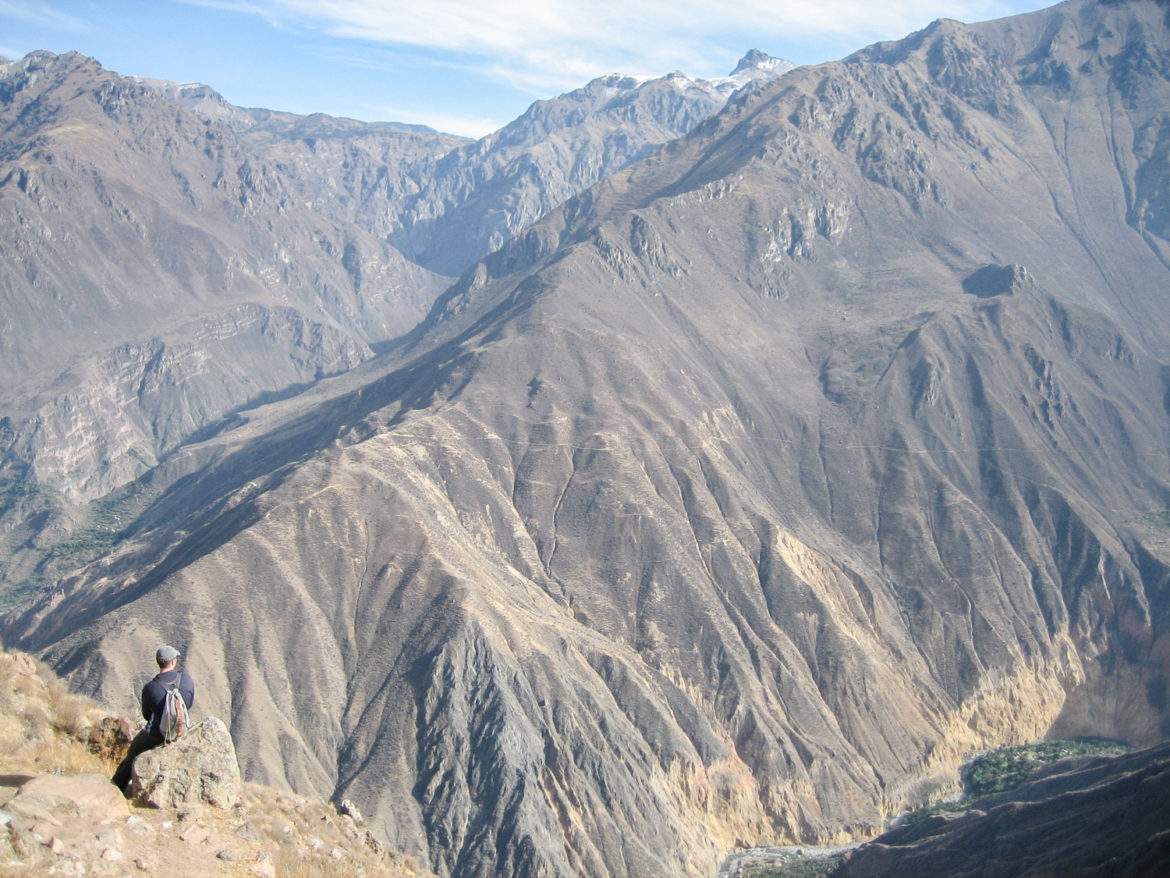Colca Canyon is considered the Grand Canyon of Peru, but much more challenging to access.
Traveling from Arequipa, we opted for the cheapest, most traditional way to Cabanaconde, the town closest to Colca Canyon. This turned out to be an overcrowded local bus on bumpy, gravel roads, complete with livestock. Yes, a llama even boarded our bus.
For several hours, we trudged along nausea-inducing, winding dirt roads. We made frequent stops to pick up locals standing on the side of the road in the middle of nowhere. We have no idea how long they had had been waiting. Men unloaded heavy burlap sacks of food and supplies in the belly of the bus, while women in colorful dresses and ornate hats, clamored aboard. Seats filled up quickly and packed like sardines, people soon took to standing in the aisles. In Peru, there doesn’t seem to be a maximum capacity on public transport.
“Vamos, vamos,” the restless crowd would shout, if the bus lingered too long at a stop.
On one stop, clever vendors stood outside the bus using claw-like poles to distribute snacks and collect payment from hungry passengers. As we pressed on to Colca Canyon, we found ourselves deep in the Andean Valley. Our bus teetered on the side of a cliff and civilization seemed a thousand miles away.
When we finally arrived in Cabanaconde, it was early in the evening. As soon as we stepped foot on the ground, a swarm of innkeepers descended upon us, the two out-of-place gringos. We check out a couple of rooms before settling on the clean and cozy Hostal Valle del Fuego. Roberto, the owner, offered us a larger room on one condition: no towels or toilet paper. We started laughing… clearly he was joking. But when he left and never returned with the aforementioned items, we realized the joke was on us.
Next door, a restaurant built into a rock provided a homey, welcoming refuge for some wine and a warm meal. In our cozy, cave hideaway, our horrendous eight-hour bus trip soon became a distant memory. Who needs toilet paper anyway? A Beatles song played and for a moment, it felt like we were at a neighborhood bar back home in the states.
After a good night’s rest, we headed out early to explore the natural beauty of Colca Canyon.
We took in our first glimpse of the canyon at Achachihua Viewpoint, just 15 minutes from Cabanaconde’s main square. Afterwards, we caught a bus to Mirador Cruz del Condor, the most popular viewing point. No wide vistas here. The canyon is known for its depth, twice as deep as the Grand Canyon (1200m).
We spotted three of the area’s elusive condors, similar to vultures with their bald heads and black feathers. We watched them soar up dramatically from the canyon. Between viewing stations, we enjoyed nice, long treks in between and had another condor sighting at Tapay viewpoint.
The canyon aside, one of the highlights of our stay was the Medioluna path. Walking this put us smack dab in the middle of amazingly lush and green terraced agricultural fields. We passed a small group of people building a decorative wall of rocks – by hand – for a local cemetery. That seemed to be a common sight in Peru. Hardworking men and women in constant, physical labor. It’s simply a way of life for them.
After a visit to a local church, we were back at Hostal Valle del Fuego’s comfortable restaurant enjoying a glass of red wine. This time, “Lord of the Rings” was playing in Spanish. Our room still had no toilet paper, but we felt at home all the same.

